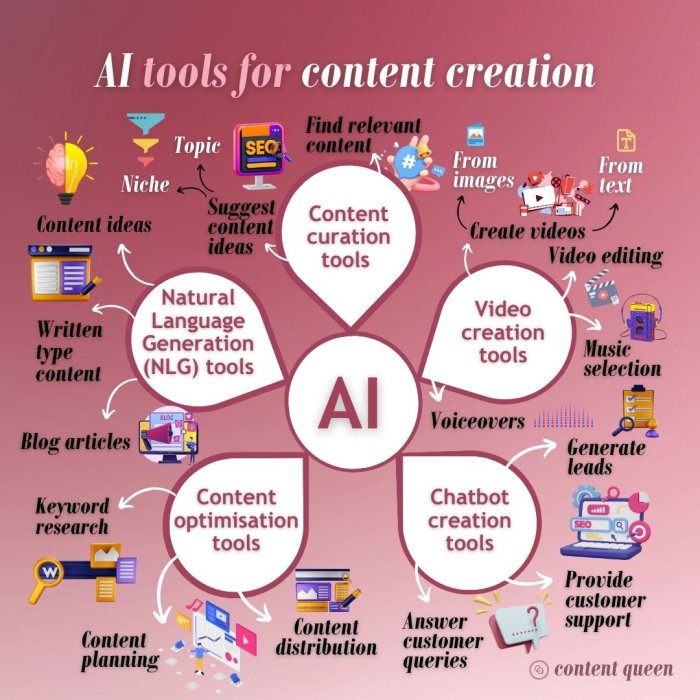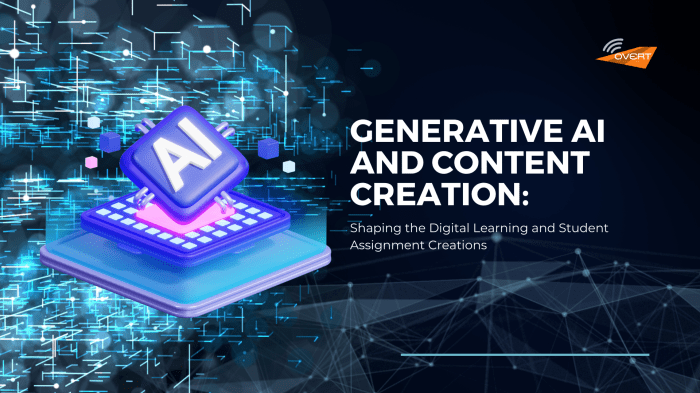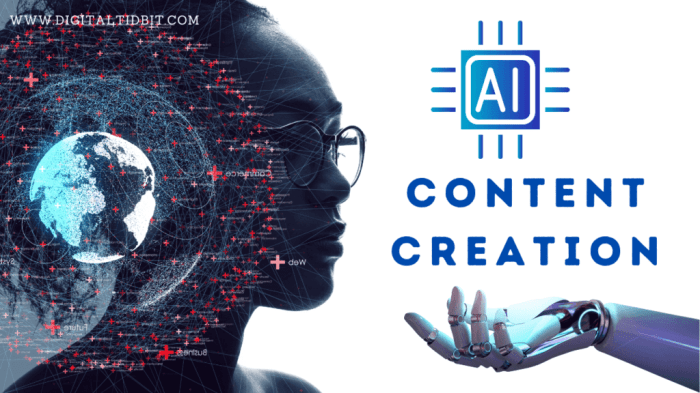Unlocking the Power of Digilife AI Content Creation
Digilife AI content creation opens the door to a world where artificial intelligence seamlessly intertwines with creativity, revolutionizing the way digital content is produced. As we delve into this innovative landscape, we discover a realm where technology meets imagination, shaping narratives that captivate and inspire.
From transforming written text to crafting captivating visuals, the possibilities are endless with digilife AI content creation.
Introduction to Digilife AI Content Creation

Digilife AI content creation refers to the process of using artificial intelligence technology to generate, curate, and optimize digital content for various platforms and purposes. AI plays a crucial role in automating tasks traditionally performed by humans, such as writing, editing, and personalizing content.
Role of AI in Content Creation
Artificial intelligence revolutionizes content creation by analyzing data, predicting trends, and optimizing content performance based on user behavior. Through natural language processing and machine learning algorithms, AI can generate engaging and relevant content at scale, saving time and resources for businesses.
Benefits of Using AI in Creating Digital Content
- Efficiency: AI tools can streamline content creation processes, enabling faster production and delivery of high-quality content.
- Personalization: AI algorithms can analyze user data to tailor content to individual preferences, enhancing user engagement and satisfaction.
- Optimization: AI can continuously analyze content performance metrics and make data-driven recommendations for improvement, maximizing reach and impact.
- Scalability: With AI, businesses can create and distribute content across multiple channels and platforms seamlessly, reaching a wider audience effectively.
Applications of AI in Content Creation

AI technology has revolutionized the way content is generated across various platforms. From written content to visual media, AI applications have significantly impacted the efficiency and personalization of content creation.
Written Content Generation
AI algorithms are used to create written content in various forms such as articles, blog posts, product descriptions, and more. These algorithms can analyze vast amounts of data, identify trends, and generate relevant and engaging written content. This not only saves time for content creators but also ensures consistency and quality in the output.
Visual Content Creation
AI is also utilized in generating visual content like images and videos. Image recognition algorithms can create visuals based on input data or even enhance existing images. Video creation tools powered by AI can automatically edit and compile video clips, add effects, and even generate personalized video content tailored to specific audiences.
Personalizing Content for Different Audiences
AI plays a crucial role in personalizing content based on user preferences, behavior, and demographics. Content recommendation systems powered by AI algorithms analyze user interactions and provide personalized content suggestions. By understanding individual preferences, AI helps content creators deliver more relevant and engaging content to their target audience.
Tools and Platforms for Digilife AI Content Creation
AI content creation tools and platforms have revolutionized the way content is produced, making it more efficient and effective. These tools utilize artificial intelligence to generate high-quality content quickly, saving time and resources for businesses and creators alike.
Popular AI Content Creation Tools and Platforms
- 1. OpenAI's GPT-3:GPT-3 is a powerful language model that can generate human-like text based on the input provided. It has been widely used for various content creation tasks, from writing articles to generating social media posts.
- 2. Copy.ai:Copy.ai is a platform that uses AI to help users generate marketing copy, product descriptions, and more. It provides templates and suggestions to streamline the content creation process.
- 3. ContentBot:ContentBot is an AI tool that can create blog posts, social media content, and even video scripts. It uses natural language processing to understand user inputs and generate relevant content.
Comparison of AI Tools for Content Creation
| Tool | Features | Usability |
|---|---|---|
| OpenAI's GPT-3 | Advanced language model, high-quality output | Requires some technical knowledge to use effectively |
| Copy.ai | Templates, suggestions, user-friendly interface | Easy to use for beginners |
| ContentBot | Content creation for various formats, NLP capabilities | Intuitive interface, moderate learning curve |
Examples of Successful Content Created Using AI Tools
AI tools have been instrumental in creating engaging and informative content across various industries. Some examples include:
Automated product descriptions
E-commerce companies use AI tools to generate compelling product descriptions that drive sales.
Social media posts
Marketing agencies leverage AI to create engaging social media content that resonates with their audience.
-optimized articles
Content creators use AI to generate -friendly articles that rank well on search engines.
Ethical Considerations in AI Content Creation

AI has revolutionized the way content is created, but it also brings along ethical considerations that need to be addressed. When it comes to AI-generated content, there are several important factors to consider to ensure ethical practices are maintained.
Copyright and Plagiarism
- AI has the ability to generate content at a rapid pace, which can sometimes lead to unintentional plagiarism. It is crucial to always credit the original sources and ensure that the content produced is not a direct copy of existing works.
- Copyright laws still apply to AI-generated content, so it is essential to understand and respect intellectual property rights. Using copyrighted material without permission can lead to legal consequences.
- Implementing proper attribution and citation practices can help avoid issues related to copyright infringement and plagiarism. By acknowledging the sources of information, creators can maintain ethical standards in AI content creation.
Ensuring Ethical Practices
- Develop clear guidelines and policies for AI content creation to ensure ethical standards are met. This includes establishing protocols for verifying information, fact-checking, and reviewing the output generated by AI systems.
- Regularly monitor and assess the content produced by AI to identify any ethical concerns or issues that may arise. Transparency and accountability are key aspects of maintaining ethical practices in content creation.
- Educate content creators and users about the ethical implications of AI-generated content. By raising awareness and providing training on ethical considerations, individuals can make informed decisions when utilizing AI tools for content creation.
Wrap-Up
In conclusion, digilife AI content creation paves the way for a future where innovation and imagination converge, offering limitless possibilities for content creators. As we embrace this cutting-edge technology, we embark on a journey filled with creativity, authenticity, and boundless opportunities.
Top FAQs
What are the key benefits of using AI in content creation?
AI streamlines the content creation process, enhances productivity, improves content quality, and enables personalization at scale.
How can AI-powered tools help in generating written content?
AI tools can assist in generating text faster, providing suggestions for improvements, and ensuring content is optimized for .
What ethical considerations should be taken into account when using AI for content creation?
Ethical considerations include ensuring transparency about AI involvement in content creation, avoiding plagiarism, and respecting copyright laws.